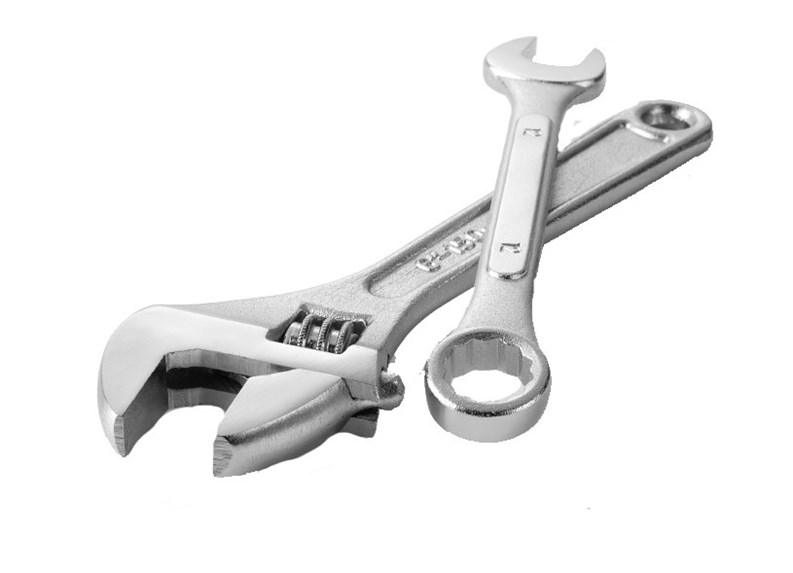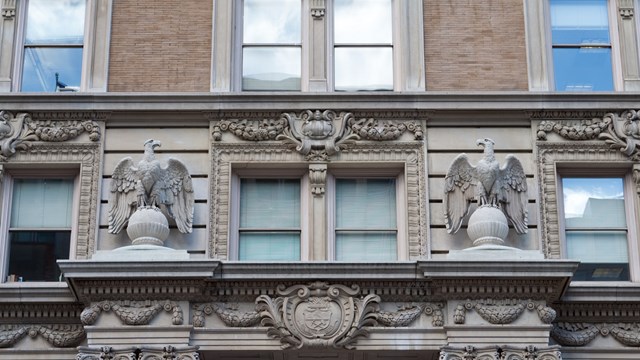Winter is here, and it's time to shut the doors, seal the windows, and crank up the heat in a quest to stay toasty warm. Unfortunately, while you work hard to thwart the wintry weather on the outside, the air inside your building may be getting more stagnant and - at times - downright smelly. Now is the time to clean your building's ventilation systems and trash chutes to help keep the air smelling fresh and clean.
"Less fresh air coming in from the outside means that there is more air recycling around inside for a longer period of time," says Scott O'Rourke, president of A-1 Hydro, a chute and vent cleaning company in Mount Vernon, New York. "The air recycles and leads to a buildup of dust, bacteria and other contaminants."
"The reason the air in the hallways is stagnant and humid is because apartments are like communal living," says Craig Berlin of ChuteMaster Environmental Inc., another chute and vent specialist located in Union, New Jersey. "You are living with the habits of everybody in your common area."
Your building's heating, ventilation, and air conditioning (HVAC) unit provides conditioned air into your apartment. Before the air gets to the conditioning unit, it passes through a filter designed to protect the mechanical equipment from becoming contaminated by large particles of dust and debris. Many HVAC filters commonly used today do not prevent small particles of dust and debris from entering into the system and over time, these deposits may form sizable accumulations.
According to the Environmental Protection Agency (EPA), if a ventilation system is not properly maintained, it may become contaminated with particles of dust, pollen or other debris. If moisture is present, the potential for microbiological growth is increased, and spores can be released into residents' living space, creating health problems for the residents, their guests, even their pets.
While duct cleaning has never been shown to directly prevent health problems, it's still widely suggested that buildings conduct a thorough cleaning every three to five years. "You can't keep it from getting dirty, but you can make certain air flows well, the exhaust fans on the roof work, and the lines are not obstructed," says Berlin.
In addition to improving indoor air quality, the National Air Duct Cleaners Association (NADCA) says that cleaning a HVAC system may allow the whole apparatus to run more efficiently by removing debris from sensitive mechanical components. Clean, efficient systems are less likely to break down, have a longer lifespan, and generally operate more effectively than dirty systems.
The NADCA recommends several ways to clean an HVAC system, including what they call "source removal;" the mechanical cleaning of system components to remove dirt and debris. Source removal methods employ vacuum units, compressed air, mechanical and hand brushes, and other tools to loosen, or "agitate" dirt and debris and convey it to a containment device for proper disposal.
"Cleaning has to be done by a professional company, because we will get to the source," said Steve Wolfson of Environmental Cleaning Systems in Valley Stream, New York. "We can remove vent covers, clean and degrease them, and brush and vacuum the shaft at the same time." To clean the ducts, air is blown into the duct; the particles become airborne and are then sucked up with a high-powered High Efficiency Particulate Air (HEPA) vacuum. Only products specifically registered through the EPA for the purpose can be used to clean grubby ducts.
On the other hand, if a service provider fails to follow proper duct cleaning procedures, duct cleaning can cause indoor air problems to get worse than ever. For example, an inadequate vacuum collection system can release more dust, dirt, and other contaminants into your living environment than if you had left the ducts alone. A careless or inadequately trained service provider can also damage your ducts or heating and cooling system, so it's important to hire professionals.
"Although it sounds simple," says Berlin, "Don't hook up a vacuum and try to do it yourself - you can trigger contaminants that were sitting quietly."
He adds that duct cleaning for a building with at least 30 apartments typically takes approximately four to six weeks to complete, depending on availability and access to the apartments. If that seems like a long time, Wolfson points out that "Many buildings don't want a five man crew in the apartment, because of security issues, so we have to send in one or two at a time and that extends the process."
Now let's talk about garbage. It's a dirty, smelly word, but we all have to handle it and if it's handled or disposed of improperly, it can create havoc, including smells, garbage fires, and a breeding ground to bacteria. Trash can also clog the doors of trash chutes - commonly called hoppers - that feed trash into the compactors below.
"The best thing for residents to do is to bag their garbage," says Wolfson. "Unfortunately, some don't, and just throw diapers or cat litter right into the chute. This creates a cafeteria for rodents and roaches. With the compactors, garbage gets crushed, but many times the bag will break and the compactor will have debris all over it. That's where the infestation starts."
Garbage disposal chutes are meant to suck odors up and out of a building through vents on the roof. This chimney effect can cause residents to inhale airborne bacteria when depositing their garbage in the chute. This air can also circulate into the hallways - and eventually into apartments.
Cleaning companies suggest that management hire a professional to conduct a thorough garbage chute, hopper and compactor cleaning at least once a year, though according to Berlin, "It all depends on the habits of the residents."
During a maintenance call, the cleaning company will perform a floor-to-floor evaluation and visual inspection to identify any potential problems. Trash chutes are then cleaned with a high-pressure water system and chemicals to kill any biological contaminants. Cleaning starts at the top floor and works its way down. A rotating nozzle and degreaser are passed through the chute several times until the walls are clean, and then a deodorizer and sanitizer are added. The cleaning crew then scrapes and cleans the hopper door on each floor, as well as the compactor. A ballpark estimate for cleaning a six-story building is less than $1,000 - pretty reasonable, given the benefits.
A trend that is slowly catching on in New York City's multi-family buildings and removing the need for regular garbage-chute cleaning altogether is the use of individual garbage disposers. Thanks to the 1998 abolition of a law forbidding their use in the city, more and more co-op and condo owners are installing disposers under their sinks and bypassing chutes and compactors altogether.
According to Dave Macnair of In-Sink-Erator, a Racine, Wisconsin-based manufacturer of garbage disposer units, "Food waste is about 70 percent water; it makes a mess, it stinks, and it attracts things you don't want, like rodents and pests. A garbage disposer unit allows you to put your food waste down the drain and send it to a municipal water treatment plant equipped to handle exactly that [kind of waste]."
The bottom line, however, is that there are an awful lot of people living in the city, and - according to online magazine The Gotham Gazette - they produce just over two pounds of garbage per person, per day. And while the number of garbage disposer units is growing, and helpful though chute-cleaning companies are, you can't just leave it somebody else to keep your building aromatic and healthy year-round. It's important that residents take some initiative and help dispose of their garbage correctly. Certain items - like soiled diapers, pet litter, food leftovers, and any kind of medical wastes - should be disposed of very carefully, and never simply thrown down a chute or left to molder in a trash room. Anything moist or edible will attract bugs and rats, not to mention potentially harmful bacteria. Maintaining a set schedule for garbage collection and chute-and-duct maintenance, and clearly spelling out what's acceptable and what's not in terms of individual garbage disposal will help control the way your building gets rid of waste. With a conscious effort and some regular professional attention, you'll see an immediate improvement in the quality of air in your building - and everyone who calls it home will be safer and happier.







3 Comments
Leave a Comment